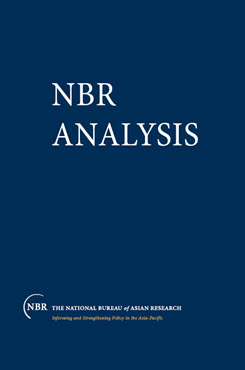NBR Analysis vol. 4, no. 5
Whither Japan?
Significant change in Japan’s politics, economy, and foreign relations is the timely subject of the two articles in this issue of NBR Analysis. The end of nearly four decades of continuous rule by the Liberal Democratic Party came dramatically in the July elections, ushering in an uncertain period of coalition government led by a reformist prime minister. This development took place in the midst of an economic recession that continues to plague Japan and its new leaders.
Kenneth Pyle examines the implications of the current upheaval in Japanese politics for the U.S.-Japan alliance, drawing upon his broad understanding of Japanese history to illuminate a “classic pattern of conservative political change.” He notes that the central ideological issues debated in Japan are over the country’s international posture and roles, and argues that Japan, divided over its international purposes and still reactive in its foreign policy, is susceptible to American leadership in establishing a “new U.S.-Japanese equilibrium.” Based upon his analysis, Professor Pyle proposes five policy goals that he believes are essential if the United States and Japan are to sustain their alliance–an alliance that is as critical as ever to global stability.
T.J. Pempel’s article explores several “tensions” that affect Japan’s foreign policy: between domestic and international political forces, between global and Asian regional orientations, and among economic, diplomatic, and military instruments of policy. Professor Pempel finds that these tensions will keep Japan from producing a cohesive foreign policy soon. He suggests, however, that in spite of its inconsistent policies Japan will further internationalize its economy and broaden its international political presence. He concludes by drawing implications for United States policy.


